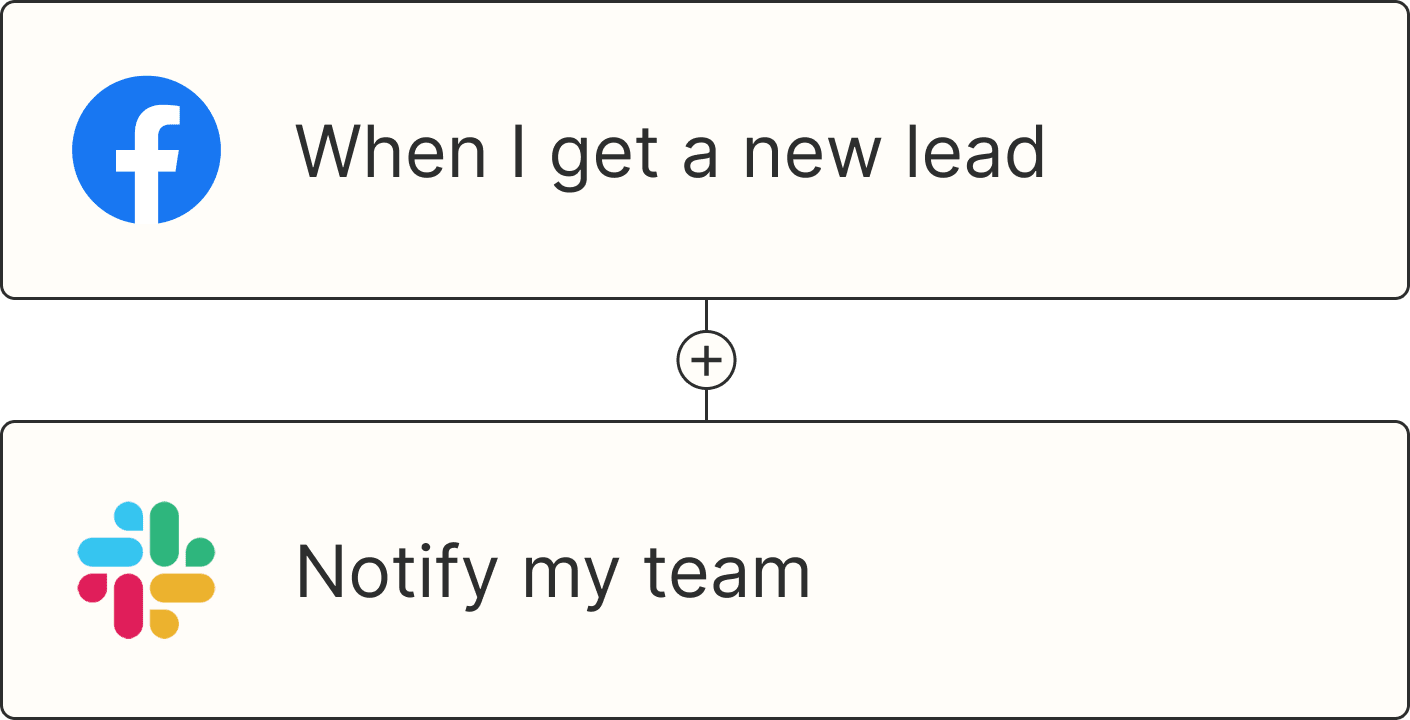Even in a world where it's hard to command attention, the email inbox is still the place we trust to keep up with what matters to us. The brands with access to it get a golden opportunity to push news, offer new products, and start conversations that aren't possible in other channels. And with search engine algorithms and social media platforms constantly in flux, having a rich email list that you own and control is more important than ever.
I've been using Mailchimp for years and have tested Brevo (formerly Sendinblue) extensively. I dug deeper into both apps for this article, exploring how each one works in detail to help you choose between them.
Whether you're looking for a Mailchimp alternative or are fresh into email marketing, these details will help you decide which app is right for you.
Table of contents:
Mailchimp wins on marketing and social media; Brevo wins on sales and live messaging
Mailchimp has more native integrations, but both connect to Zapier
Brevo's free plan is better, and its paid plans are more affordable
Brevo vs. Mailchimp at a glance
Mailchimp is one of the most popular email marketing platforms available today. Brevo isn't as well known, but it's still competitive in features and pricing. Here's a quick overview, but keep reading for a deep dive into my experience with the apps and who they're best for.
Brevo | Mailchimp | |
|---|---|---|
Email templates | ⭐⭐⭐ 50+ templates; they're a bit dated, but even users on the free plan get access to them | ⭐⭐⭐⭐ 230+ templates; you only get access to all of them on paid plans, though |
Audience segmentation | ⭐⭐⭐⭐ Brevo's segmentation builder isn't quite as powerful as Mailchimp's (available on all plans) | ⭐⭐⭐⭐ Intuitive tag-based system, plus a powerful segmentation builder and predictive segments (requires higher level plans) |
AI features | ⭐⭐ AI for subject lines, content generation, and "send at best time" optimization (requires Business plan or higher) | ⭐⭐⭐⭐ Impressive AI toolkit: content generation, automated journeys, AI segmentation, Creative Assistant, and analytics insights (requires Standard plan or higher) |
Reports and analytics | ⭐⭐⭐ Solid reporting features, including standard open and click tracking, geography and device reports, heat maps, and conversion and deal tracking | ⭐⭐⭐⭐ Advanced reports and analytics, including ROI and eCommerce stats; offers a better set of data if tracking performance is important |
Extras | ⭐⭐⭐⭐⭐ SMS, WhatsApp, Facebook ads, web push campaigns, live chat, landing pages, CRM, meeting scheduling, phone service | ⭐⭐⭐⭐ SMS, landing pages, website builder, rich social media integration, surveys, service appointment scheduling |
Transactional email | ⭐⭐⭐⭐⭐ Included on all plans, even free; dedicated IP available for $21/month | ⭐⭐⭐ Transactional emails cost extra, starting at $20 for 25,000 emails; dedicated IP costs $29.95/month |
Free plan | ⭐⭐⭐⭐⭐ Generous free plan that includes automations and allows up to 100,000 contacts (though there's a daily sending cap of 300 emails) | ⭐⭐⭐ Limited features for 500 contacts and up to 1,000 emails per month on the free plan |
Pricing | ⭐⭐⭐⭐ Brevo starts at just $9/month; since many of its plans include unlimited contacts, it's incredibly affordable if you have a large list but don't send many emails | ⭐⭐⭐ Entry-level plans start at $13/month, but prices scale quickly as you add contacts |
Integrations | ⭐⭐⭐ Around 65 integrations; integrates with thousands more via Zapier | ⭐⭐⭐⭐ Over 300 integrations; integrates with thousands more via Zapier |
Mailchimp has more marketing and social media features; Brevo offers sales and live messaging tools
Mailchimp is no longer the bootstrapped email marketing platform it was back in 2001. It's been growing for over two decades with features, and since it was acquired by Intuit, it's become an all-in-one marketing beast. On top of email marketing, Mailchimp offers:
Automation flows, including prebuilt templates and a custom workflow builder
A website/eCommerce store builder, helping you establish a presence online
Social media scheduling directly from the platform—along with paid ad management—and analytics to see how you're doing
Advanced analytics on all the data to help you make the right decisions
Campaign Manager calendar to help visualize all the messaging you're sending out
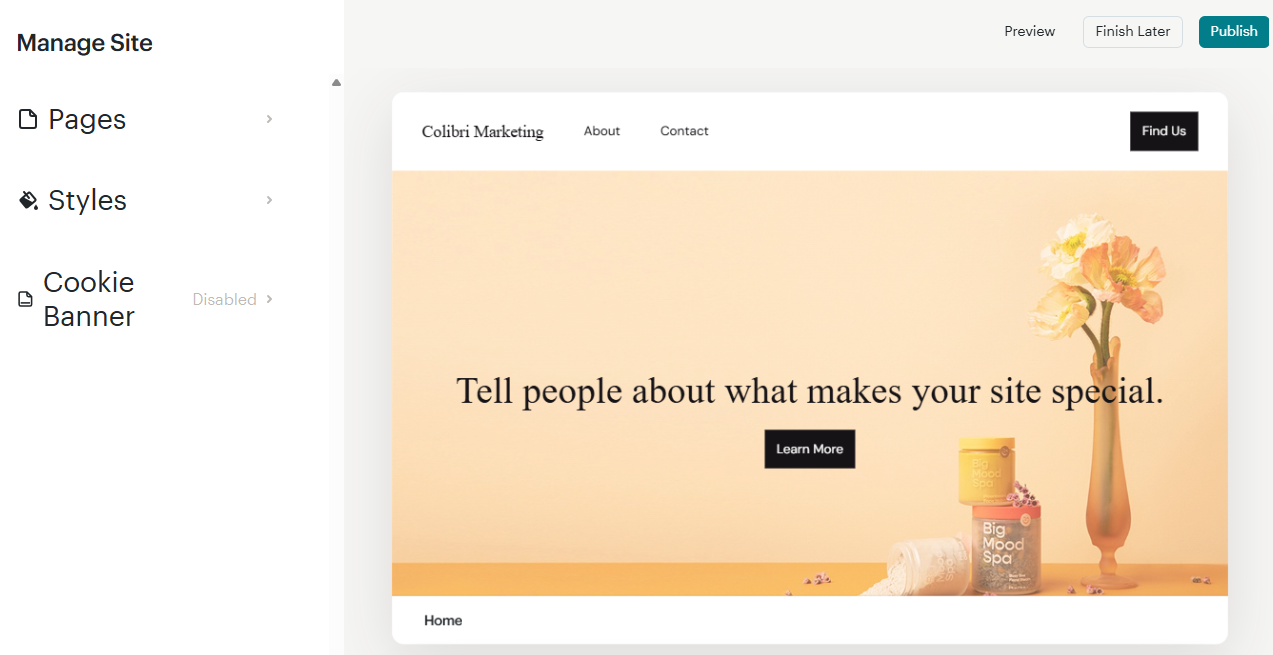
All these features are available with easy-to-use menus, accessible tutorials, and great user experience design. It's easy to see why Mailchimp is so popular.
Brevo is more focused on helping you communicate with your audience. It helps you run SMS, WhatsApp, Facebook Ads, and web push campaigns alongside email, letting you set up automations to integrate all of the above into a rich experience across channels. It also lets you customize a live chat window that you can embed on your website. You can manage all the conversations directly within Brevo to handle any questions easily and quickly, and built-in chatbot and automation features can reduce your customer service load.
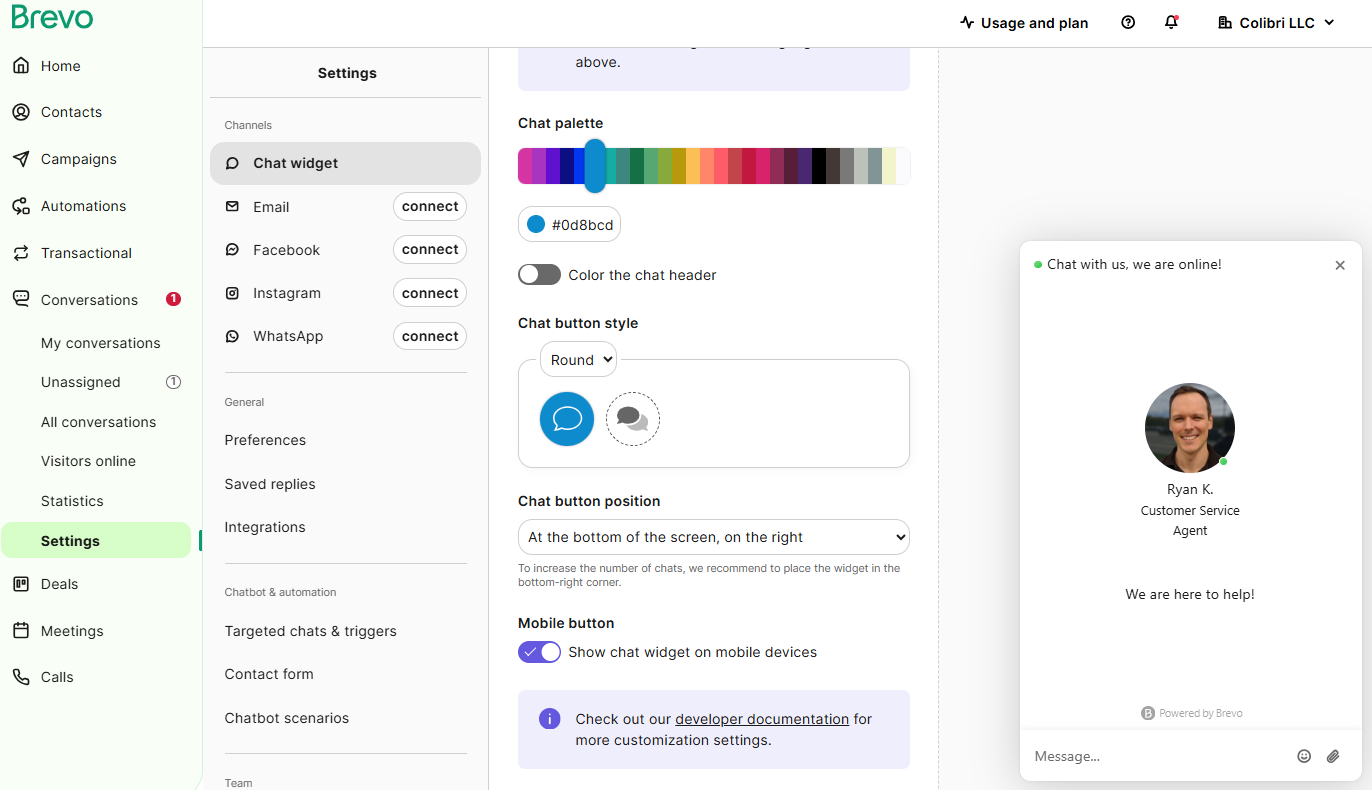
Another advantage of Brevo is the fact that you can truly use it as a CRM. Since it has unlimited contacts, you'll never hit a wall, and you can even set up a sales pipeline to keep track of deals you're negotiating.
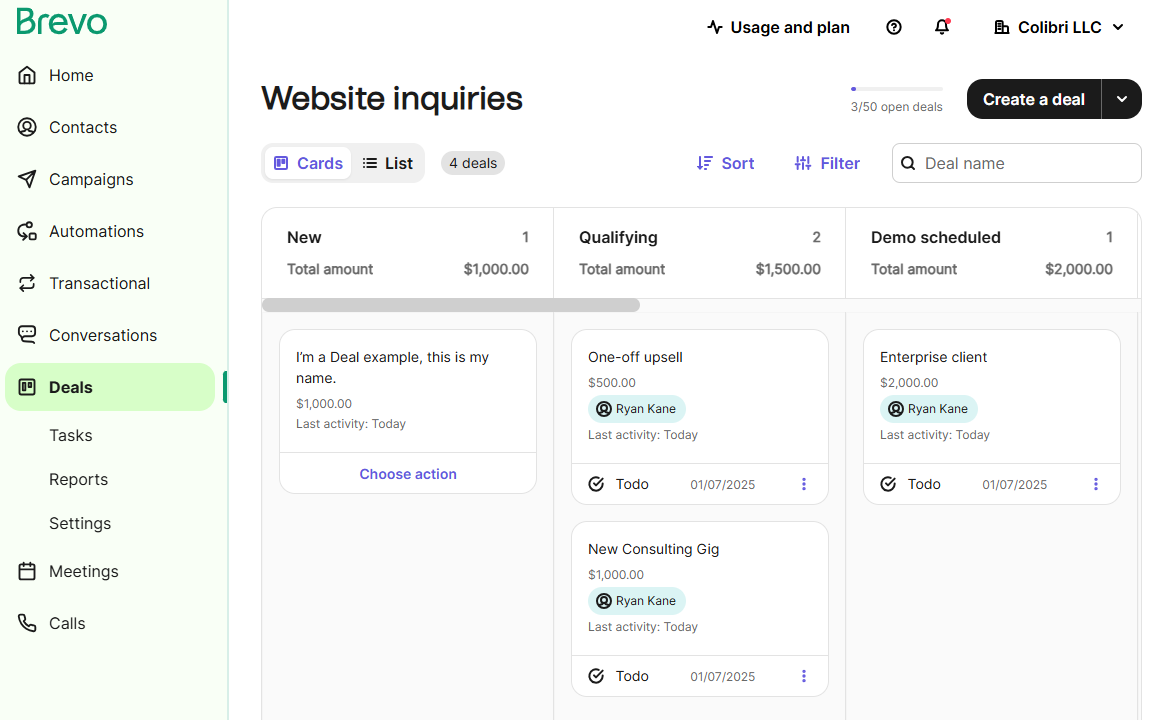
Plus, Brevo now includes meeting scheduling and phone features, so you can manage all your sales communication in one place.
Some of these added features do have a cost, especially if you need access for multiple users. Brevo's sales platform costs $12/month/user, and its conversations platform (for live chat) costs $15/month/user. Still, since there are generous free versions for each platform, Brevo could work nicely as an affordable email, marketing, and sales "everything app" for the right user. Consultants and solopreneurs, for example, shouldn't have much trouble working around the feature restrictions (like the one user maximum for live chat, or the limit of one deal pipeline for the Sales feature).
Both have solid segmentation features, but only Brevo offers them for free
Segmentation is the difference between annoying your audience with irrelevant emails and delighting them with messaging that actually meets their needs. Mailchimp and Brevo take notably different approaches here.
Email marketing has long been list-centric. While Mailchimp has now discarded lists in favor of tags, Brevo sticks with a list-based approach. Brevo also goes a step further and offers the ability to organize your lists into folders. While it's nice to have these organizational options, it all feels a bit clunky to me in practice—in the age of AI, there are better ways to do this using dynamic tags and advanced segmentation.

Brevo's prebuilt segmentation options are limited to a few templates, like Engaged email contacts and New email contacts, and the segmentation builder isn't as impressive as Mailchimp's. Still, it's a solid option and especially helpful if you're planning to use Brevo's sales and conversations platforms, since you can create segments that let you send emails to contacts with active sales deals or people who've recently engaged with the live chat on the website.
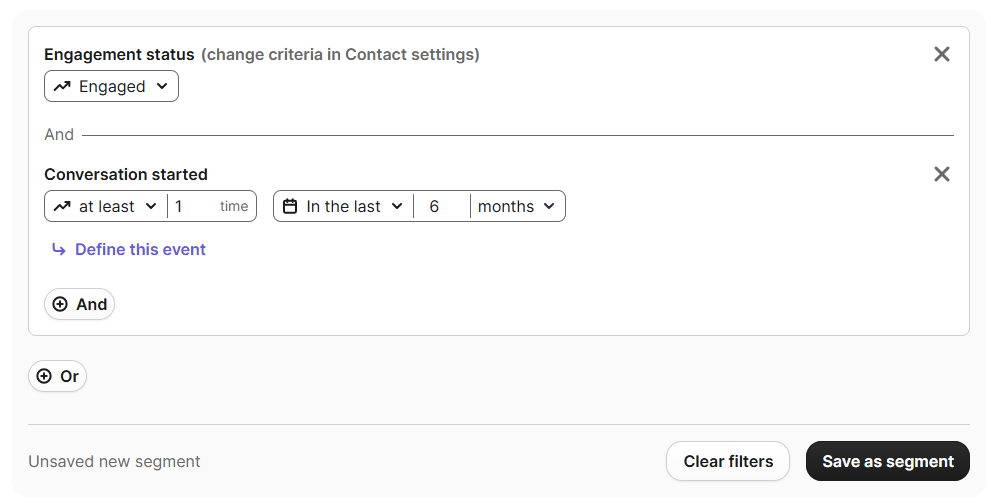
Brevo's big edge is that you don't need to upgrade for segmentation features. Even on the free plan, you get full access to almost all of the app's segmentation capabilities.
Mailchimp keeps things simpler, offering just tags and segments—and no lists. Whether this is a good or bad thing depends on your email marketing workflow. For me, Mailchimp's minimalist tags-plus-segments system works nicely: it's easy to add tags as new subscribers arrive over time, and with Mailchimp's powerful segment builder, you can dynamically build those tags into highly-targeted groups.
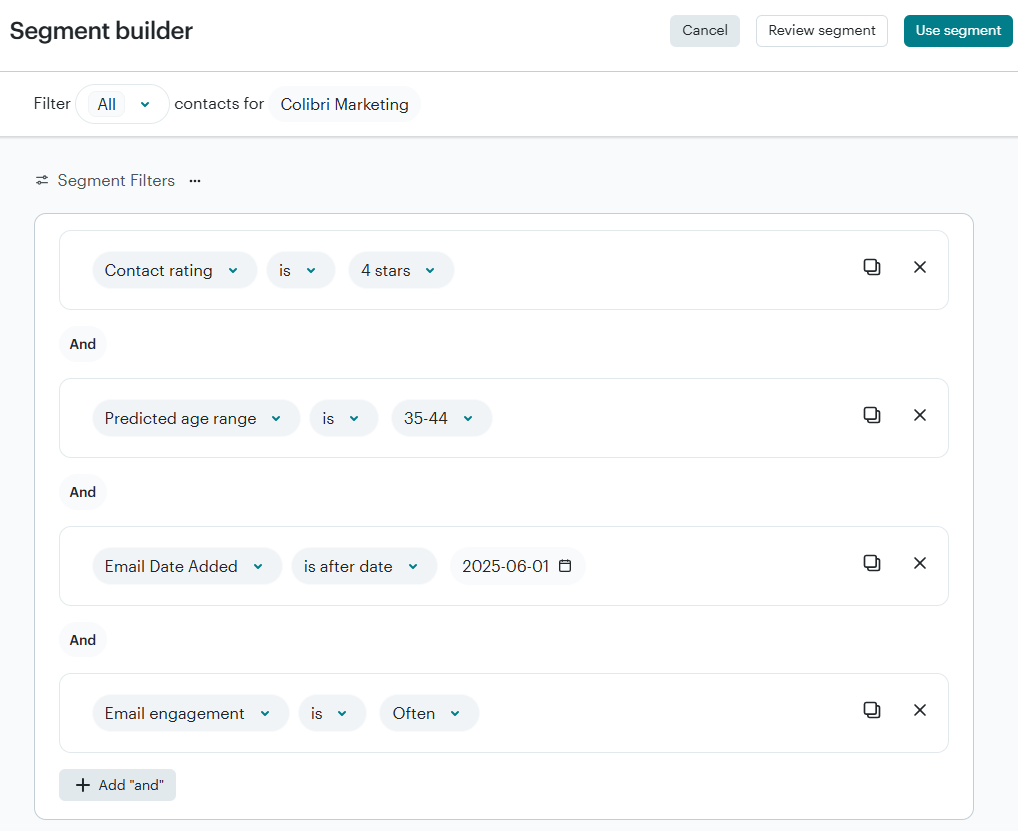
The drawback is that Mailchimp's advanced segmentation features don't kick in until you sign up for the Standard plan, which starts at $19/month. Until then, you'll be primarily working with a tag-based approach along with some basic segmentation features. If you're planning to rely on the free plan or to sign up for Mailchimp's entry-level Essentials plan, this is an important limitation to keep in mind.
Mailchimp has more useful analytics
If you've been working in performance marketing for a while, you know it's all about the data. Powerful analytics removes the guesswork, helping you sync with your audience's needs much faster. Mailchimp is here to guide you: it goes beyond basic email marketing stats to give you a higher-resolution view of what's happening.
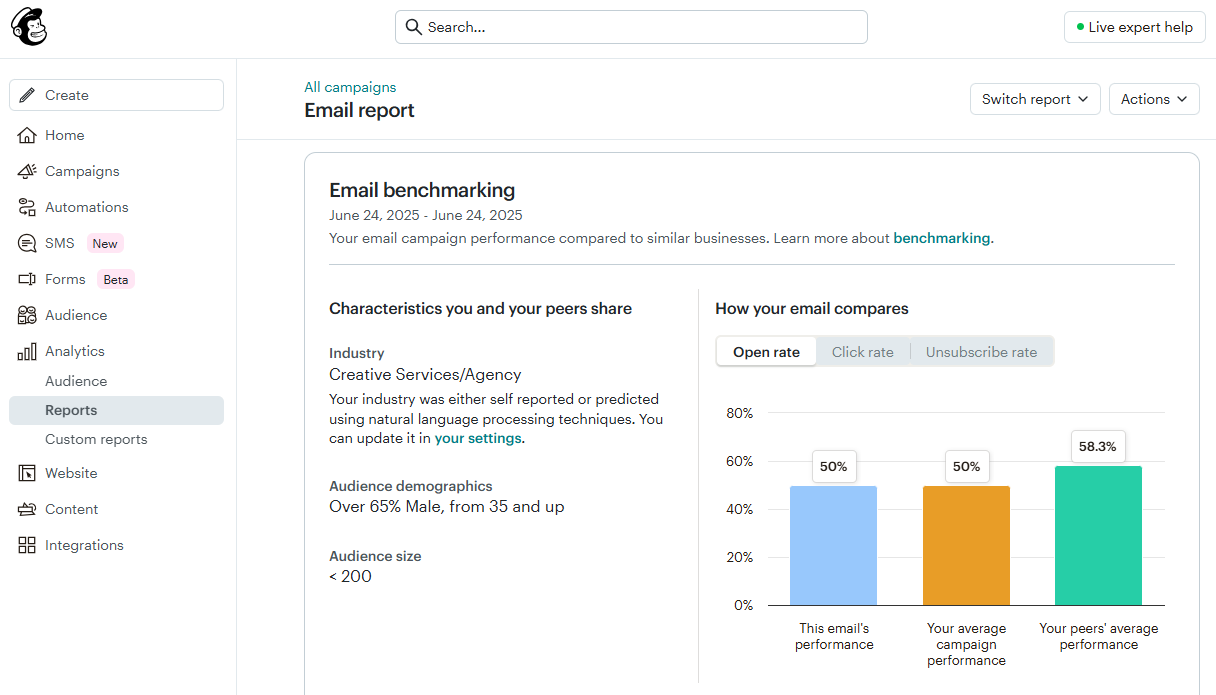
The analytics tab has three subsections:
Audience provides a unified view of all the data generated as you use Mailchimp to run your marketing, as well as your connected analytics sources from your eCommerce store.
Reports has a list of all the campaigns you sent in the past, going really deep into the top links clicked on each email, benchmarking stats (is your open rate higher than others in your industry?), 24-hour open performance, subscribers with the most opens, and geolocation.
Custom Reports lets you add your spin to analytics, helping you track the metrics that matter the most for how you do business.
The numbers game gets more interesting when you connect your eCommerce shop to Mailchimp. You'll be able to access stats like campaign revenue, revenue by subscriber, and the almighty ROI. All of it in easy-to-understand charts and tables, with some recommendations in the mix to help you improve.
With Brevo, you won't be flying blind, but you won't be able to see very far. Plus, reporting features are scattered throughout the tool.
Head to Campaigns > Statistics, and you can see a similar—if less beautiful—view into who opened and clicked your emails, who unsubscribed, and a bounce breakdown, for both your email and SMS campaigns.
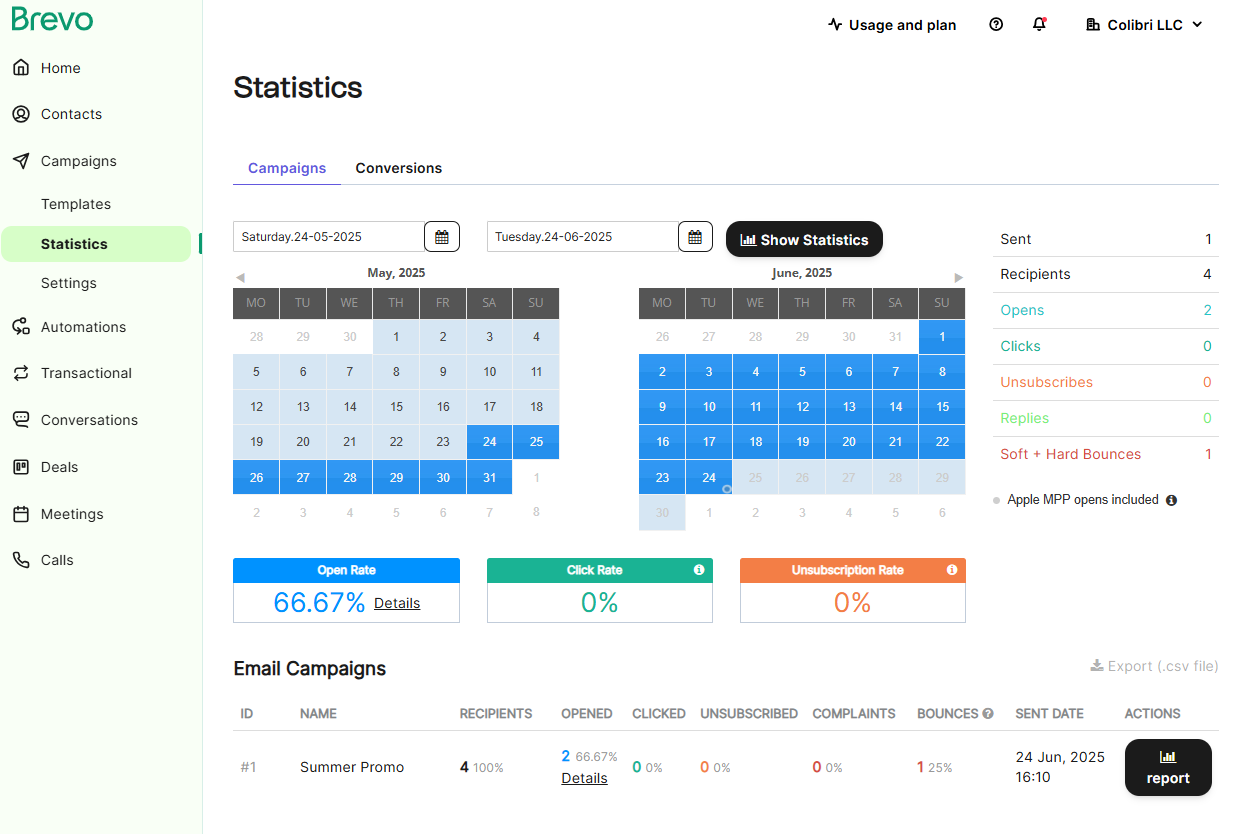
Or navigate to Campaigns > Email and click the Report link on any given campaign to see a more detailed, campaign-level view of these stats, plus geography and device data, 24-hour open and click data, and a heatmap view of your email.
If you head over to Settings and click on Conversions, you'll be able to set objectives for each campaign, letting you measure whether you're hitting webinar sign-up targets, for instance. An interesting feature, for sure, but setting it up is complex and involves a bit of time. If you want to stay on top of the data, Mailchimp is the faster, better choice.
Brevo offers transactional email on all plans
Transactional email is about delivering confirmations, notifications, and automated reminders. Brevo includes these in all their plans, even the free one.
If you're just handling transactional email with the free plan, the 300 daily limit should be easy to control if your shop isn't very chatty. Want to run email marketing on top of that too? Be careful: if you run out of emails in one day, you won't be able to send those critical automated notifications to your subscribers until the next day. Keep an eye on the counter on the dashboard page and play safe.
Another key aspect of transactional email is tied to dedicated IPs. When you send your email campaigns with Brevo, they get sent via a set of shared IPs. This means that your emails and those of your less ethical marketer neighbor come from the same place, which could have mailboxes marking it as a promotion or, worse, outright spam. When delivering critical notifications, having a dedicated IP helps these messages break through those filters, landing in your subscribers' inboxes. This will cost $21 per month with Brevo as an add-on to the regular pricing plans.
Mailchimp also offers transactional email, but you have to purchase it as an add-on on top of the subscription price. It starts at $20 for 25,000 emails, and the price per email goes down the more you need. A dedicated IP is $29.95 per month, making it a bit pricier than Brevo on both fronts.
Mailchimp has more native integrations, but both apps connect to Zapier
If you love knitting powerful apps together, Mailchimp has more native integrations (over 300, compared to Brevo's 65ish), which will help make these connections more seamless. But both Mailchimp and Brevo let you connect to thousands of other apps with Zapier, so you can delegate more of your email marketing tasks to the robots.
Zapier brings the power of AI to automation, so you can orchestrate all your marketing workflows across your tech stack. Learn more about how to automate Mailchimp and how to automate Brevo, or get started with one of these pre-made workflows.
Add new Mailchimp subscribers to Google Ads customer lists
Add subscribers to Mailchimp for new Google Sheets rows
Turn new Stripe customers into SendinBlue contacts
Create Brevo subscribers from new Facebook Lead Ads leads
Zapier is a no-code automation tool that lets you connect your apps into automated workflows, so that every person and every business can move forward at growth speed. Learn more about how it works.
Brevo's free plan is much better, and the paid plans are more affordable
The standard pricing strategy for email marketing tools is almost always the same: there are two to four tiers with increasingly better features, and the price then scales based on your contact list size and how many emails you send out each month. Brevo follows this rule with one valuable difference: once you get past its entry-level paid plans, Brevo doesn't care about the size of your list. The price goes up based only on your monthly email sending volume.
The free plan lets you send up to 300 emails per day to your contacts, a total of 9,000 emails every 30 days. You'd expect a basic set of features, but Brevo packs a lot into the free plan:
You can set up email automation with very few limitations in terms of triggers, actions, and delays for up to 2,000 contacts
There are SMS, WhatsApp, and web push campaigns in the mix—you'll have to buy some credits on a pay-as-you-go basis for each SMS text, though
Advanced segmentation to group and tag every subscriber
Transactional email
Sales CRM features
Live chat for 1 user
When you outgrow the limits of the free plan, Brevo offers inexpensive increases to the monthly email sending volume. Hop on the Starter plan for $9 and raise your sending cap to 5,000 emails/month. If you want the advanced features of the Business plan, the price goes up a bit—to $18/month—to justify the extras: multi-user support, unlimited marketing automation, A/B testing, and more advanced reports. Brevo's cheapest plans do have contact limits, but once you reach 20,000 emails per month, you get access to unlimited contacts.
Mailchimp is in line with the standard in terms of pricing: it charges you based on your contact list and your sending volume. Its free plan includes:
Simple automation features (abandoned cart and a welcome sequence)
1 audience (subscriber list)
1 user
A limited selection of email templates
Basic reports
Hopping on the lowest paid plan, Essentials (for $13/month), will add more features to your account, but it won't raise the contact limit. If you have 2,500 contacts and send 20,000 emails/month, you'll pay $45/month for Mailchimp's barebones Essentials plan and $60/month for its Standard plan. Brevo charges just $29/month for the same email volume, with the added benefit of unlimited contacts.
Brevo is an especially good deal for anyone who has a big contact list but sends emails infrequently. For example, a nonprofit sending two fundraising emails/month to a list of 50,000 contacts would pay $385/month with Mailchimp, but only $69/month with Brevo.
Mailchimp offers more comprehensive AI features
If you're looking for standard generative AI features, like writing subject lines and emails, you'll find solid features in both Mailchimp and Brevo. But Mailchimp goes further, with a range of AI features that make it easier to do things like segment your audience and design automations.
When designing an email in Mailchimp, you can start generating content with AI within any text block. Enter your prompt, and choose the best of three outputs. There are additional controls for tone, shortening the copy, or re-prompting to change the results. When you click apply, that text will land on your email, and you can keep refining it there.
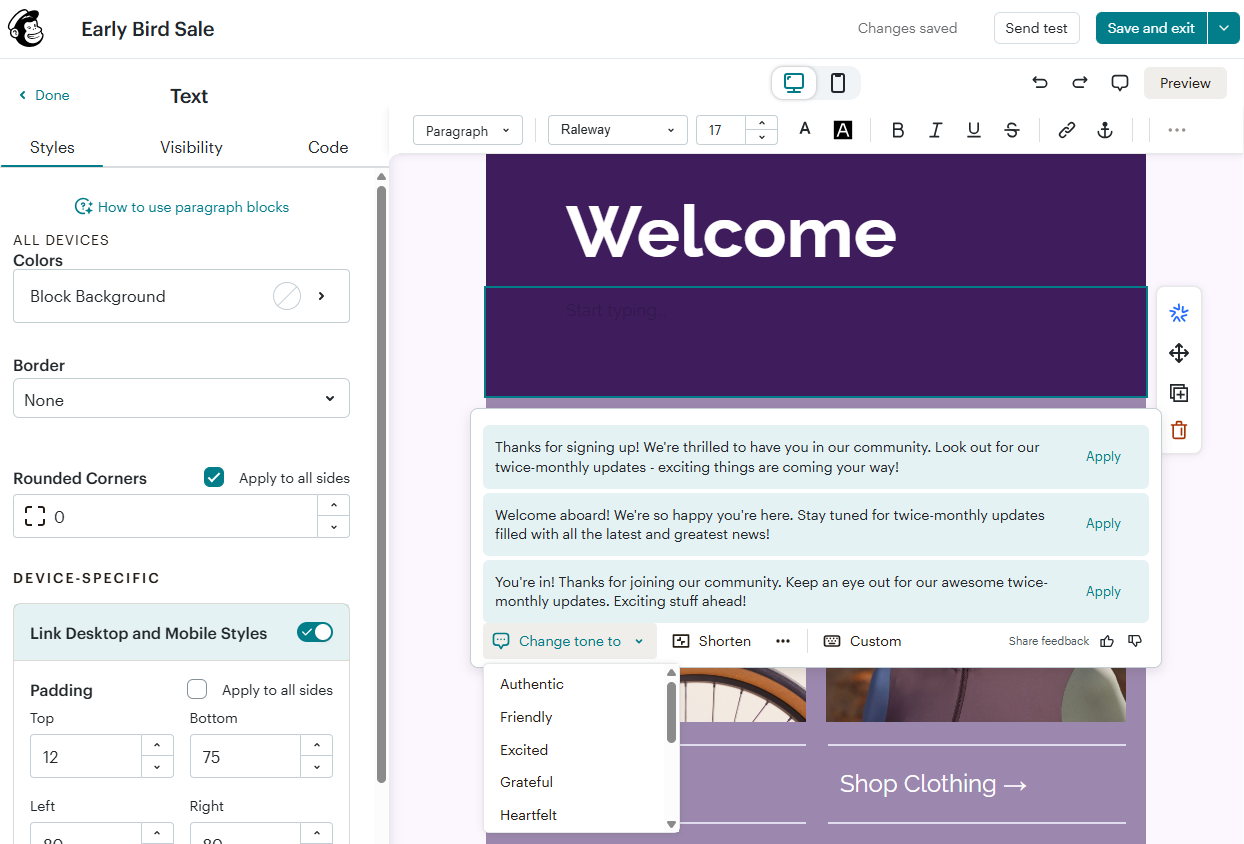
Mailchimp also offers AI-powered automation flows, where the platform generates welcome emails or abandoned cart sequences based on what it knows about your brand. There are only three available right now, but they can push you closer to the finish line, especially if this is your first time configuring them.
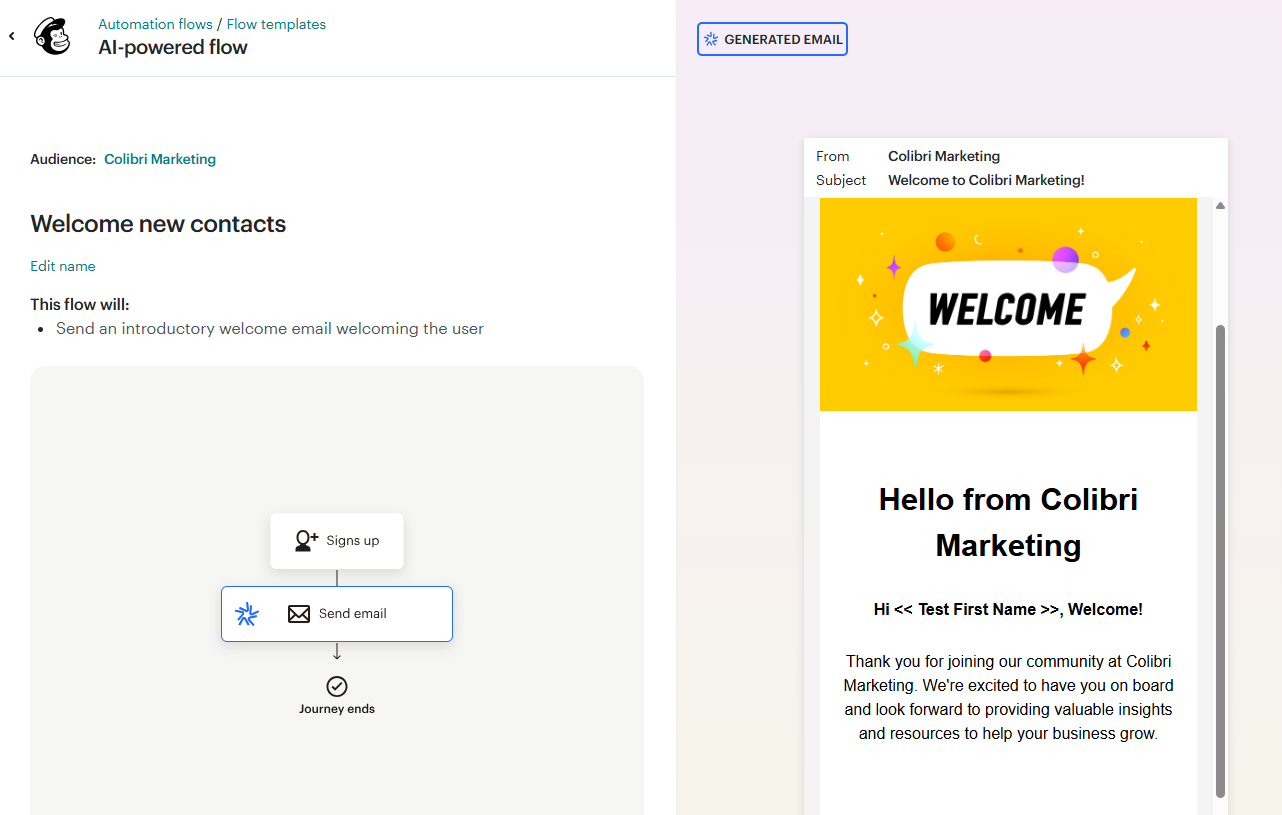
You can also use AI to create on-brand email campaigns through a Mailchimp feature called Creative Assistant, or automatically segment your audience into new cohorts so you can target them with personalized messages. (Brevo also offers AI segmentation, but currently only for enterprise customers.) Lastly, Mailchimp uses AI in your analytics, offering actionable insights in the email reports section to help you improve elements such as readability or text-to-image ratio.
Brevo's AI implementation for creating newsletters is useful, though not all that innovative. The first place you're likely to encounter Brevo's AI assistant is when you're writing your email's subject line.
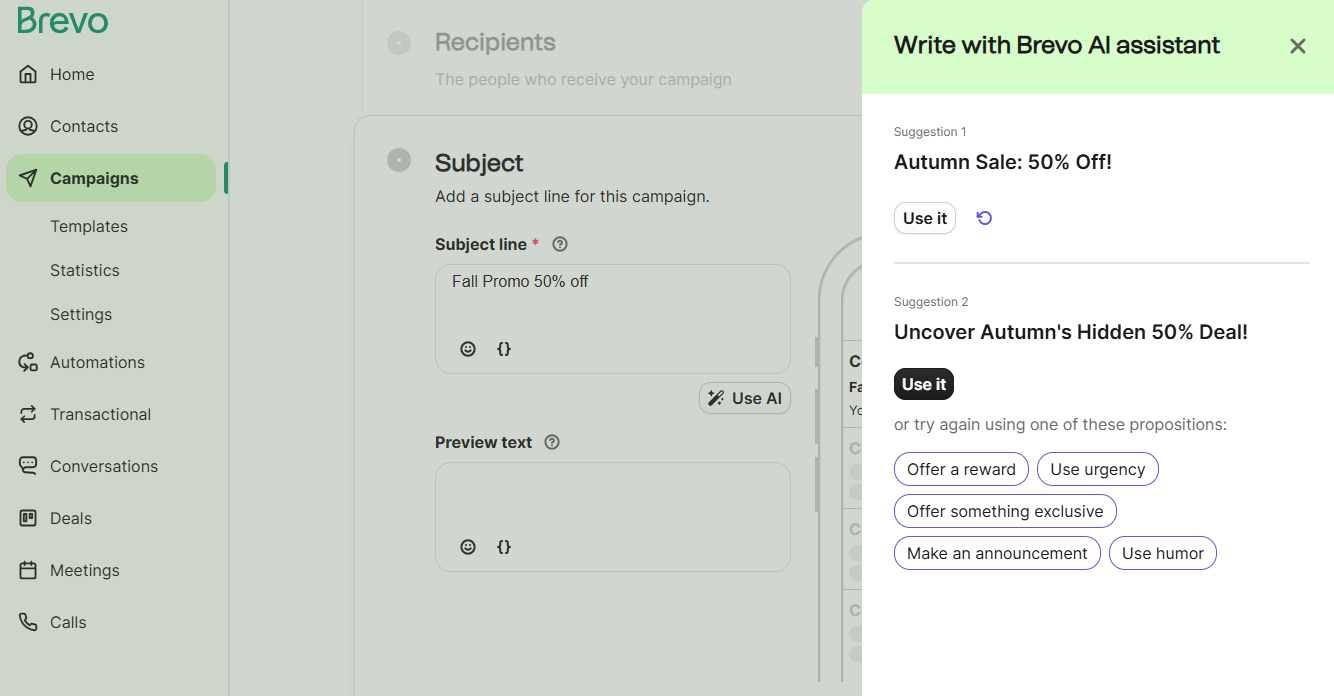
When designing a new email, click the Aura AI tab on the left side, and get started with generating a paragraph, title, or button. You can add a prompt and regenerate the results. When you find a good candidate, click the add button, and it'll pop into your email's body on the right side. Just edit to make it yours, and you're good to go.
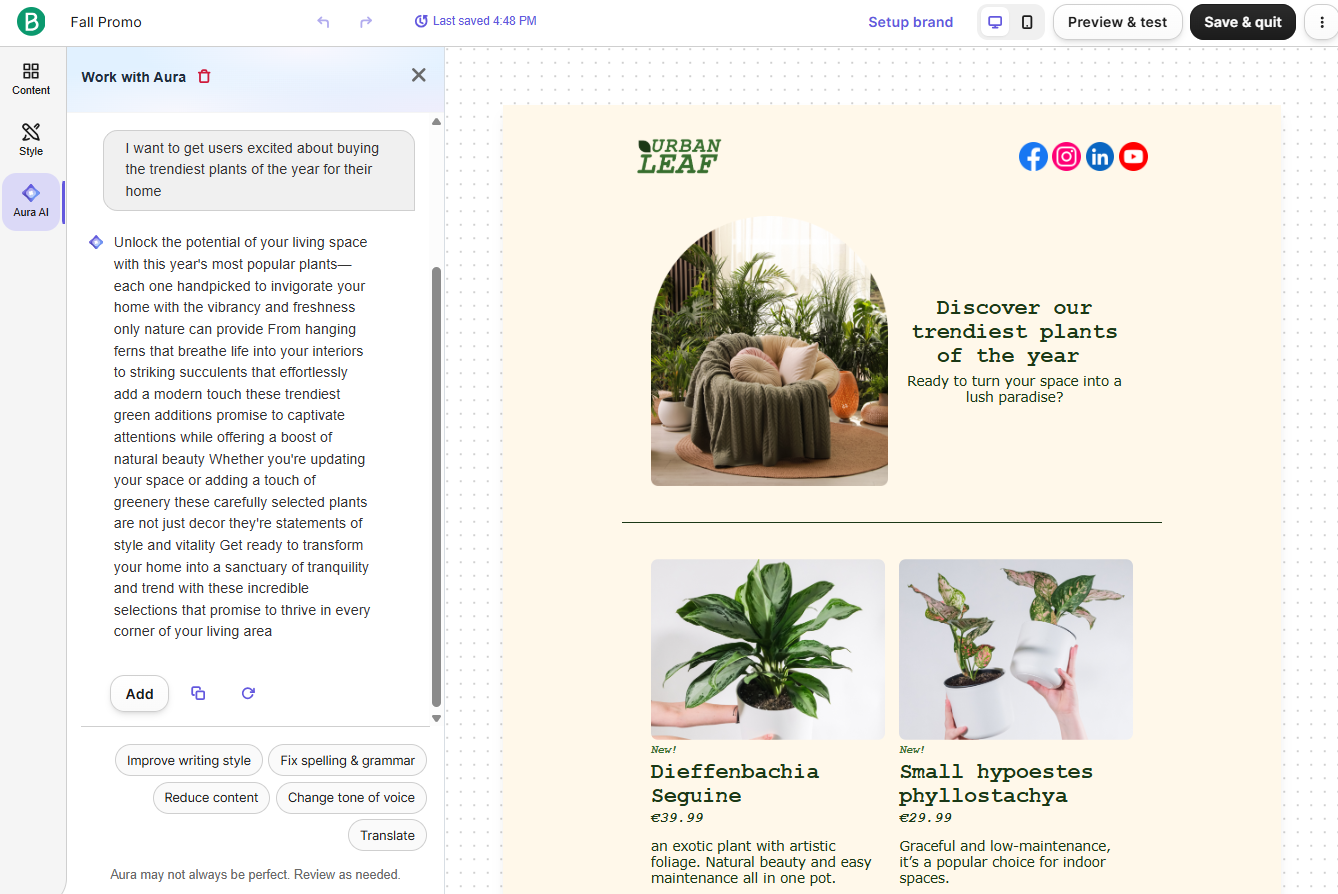
Another handy AI feature is the "Send at best time" feature, which gradually sends your campaign out to subscribers at the times each recipient is most likely to engage. (Mailchimp has a similar feature.)
Most of Brevo's other AI features are connected with the CRM part of the platform. These will help you write emails from scratch, summarize conversations, hone your tone of voice, enrich sales contacts, and find the best time to send an outreach message to your lead.
Mailchimp vs. Brevo: Which should you choose?
Still not sure which email app makes sense for you? Here are some parting thoughts to help you decide.
Choose Brevo if you want an inexpensive email marketing platform, have a large contact list, or want an all-in-one platform for email, sales, and customer communication. With many plans offering unlimited contacts—and with useful extras like a built-in meeting scheduler—Brevo is a great deal.
Choose Mailchimp if your primary focus is marketing, especially if you run an eCommerce shop or brick-and-mortar business. Mailchimp offers advanced analytics and impressive AI features, and its marketing extras—like a website builder and integrated social media posting—make it an effective marketing hub for small businesses.
Related reading:
Email marketing best practices: lists, content, testing, and more
How to automate your email marketing for better communication
This article was originally published in December 2022 and has also had contributions from Kiera Abbamonte. The most recent update was in July 2025.









